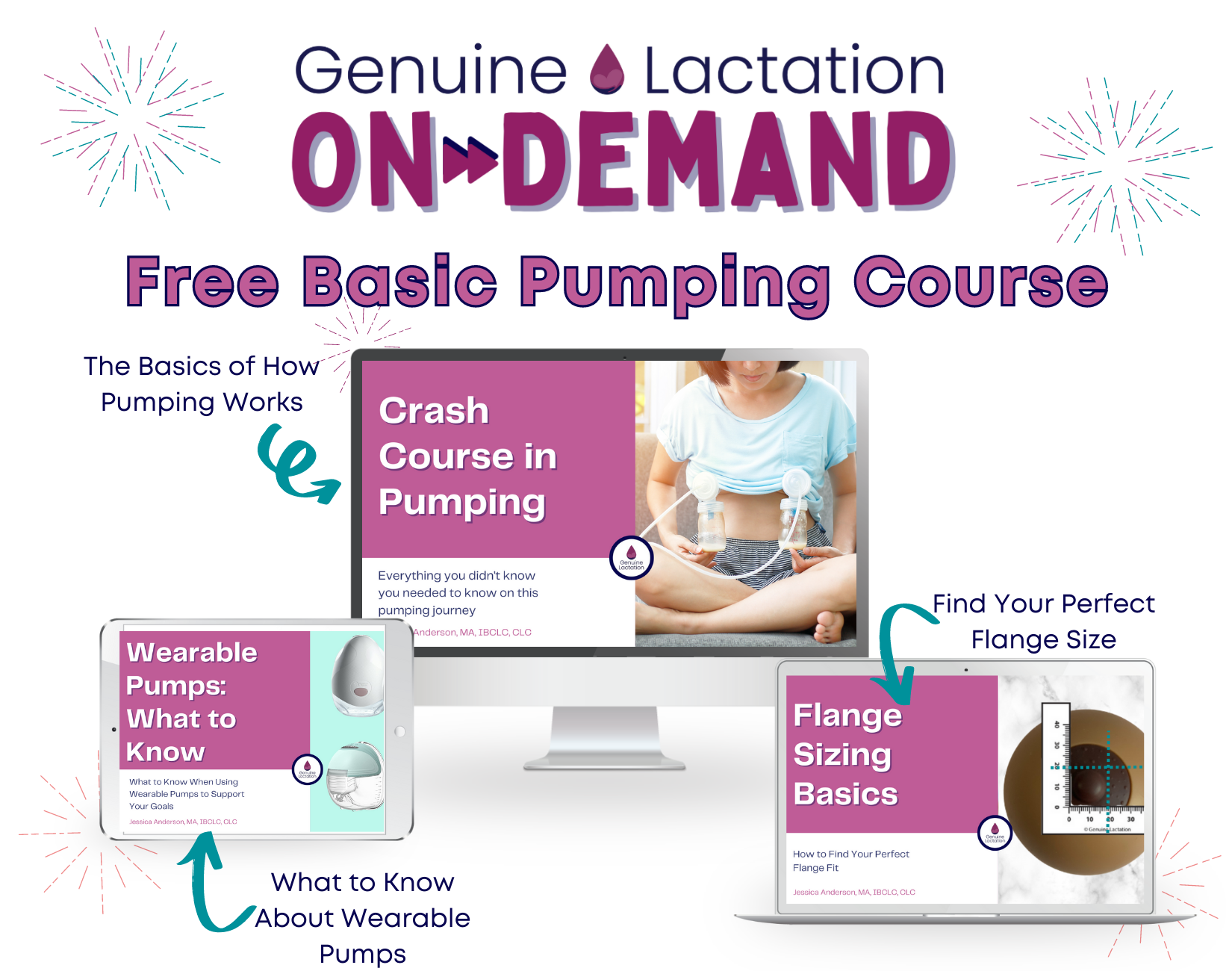How to Get Your Perfect Flange Size for Your Wearable Pump
It’s no secret that flange sizing with wearable pumps is tricky- and the number of myths surrounding this issue is high!
The Biggest Wearable Pump Sizing Myth
Let’s bust the biggest myth right away- wearable pumps don’t have special flange sizing simply because they are wearables. The sizing recommended with a particular pump is based on the type of suction the pump has and how that impacts breast tissue.
Most pumps on the market are standard “tug and release” suction. A small handful are constant suction where the nipple is held under suction continuously and the level pulses up and down with no release. This gives us two basic types of sizing guidelines: Standard Sizing and Constant Suction Sizing
Wearables come in both types of suction!
They are smaller more compact versions of traditional pumps- they don’t have their own special sizing.
What they do have is a few extra steps you may need to take to get the correct sizing and some extra things to consider that we don’t always think of with sizing for traditional pumps because we lack the one thing we rely on with traditional sizing methods-
We can’t see the nipple moving.
So we need to take a few extra simple steps to make sure we get can get your sizing correct for your wearable pump!
How To Get Your Wearable Pump Sizing Perfected
First things first……head on over to take the Free Flange Sizing Basics class so you have all of the information to understand the what and whys of these recommendations!
Next steps now that you know all of the things you need to know to start sizing
1. We measure the nipple at the right time using a reliable tool- this is explained over here!
2. We look at the shape and elasticity of the nipple- this is how we know what to account for when using that measurement you just took using optimal timing and tools.
3. We use your measurement and nipple type to get you started with evidence based guidelines based on the type of suction
4. We check bra fit to make sure the bra isn’t pushing the pumps into your breast tissue aggressively or letting them slip out of place since this can skew the marks on the breast we need to assess the wearable fit the best way we can….
5. We look at the marks we see on the nipple- we want to see a ring at the base of the nipple that shows the nipple with minimal areola was pulled into the tunnel and stimulated. Watch for the marks being more than 1-3 mm out from the nipple base or the marks indicating the base of the nipple didn’t actually get into the tunnel. Just don’t assume these marks are definitively sizing related- they can be from sizing, shape of the insert, texture of the insert, or they can be the earliest signs of nipple trauma concerns.
And if we can we view the nipple ideally in the same size flange with a standard pump that’s the easiest way to assure the highest chance of success by starting at the most likely to work sizing. It’s not a guarantee still to be perfect because every pump is shaped a little differently and each breast will respond slightly differently to each pump. But it will give you an advantage if you know what to look for!! Then we adjust slightly as needed to accommodate the differences between the pumps being used.
And if after all of these steps you still aren’t finding you empty comfortably within 30 minutes and only your nipple is being pulled into the flange don’t stress. Sizing flanges for wearables is tricky but you don’t have to DIY your way through it if it’s not working. I’m here to help take all the headache out of this.




